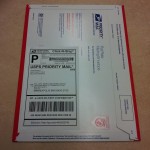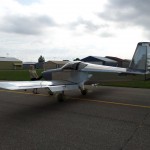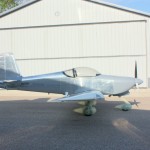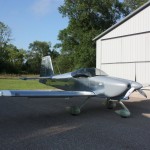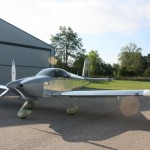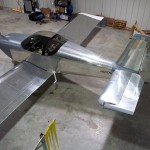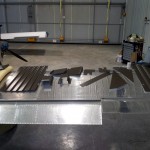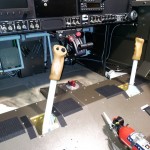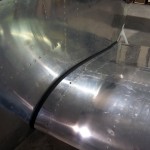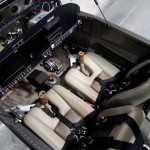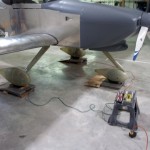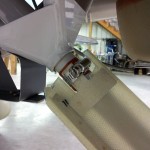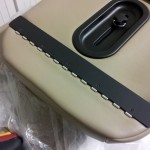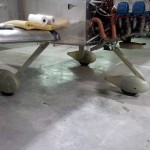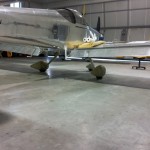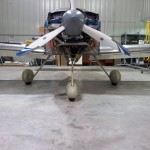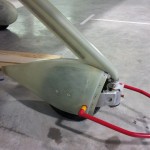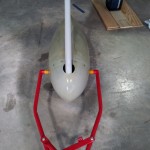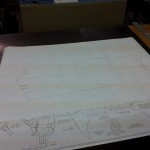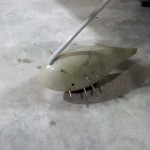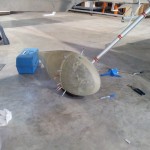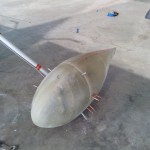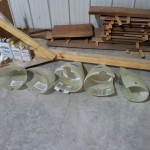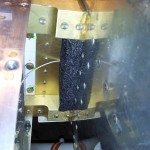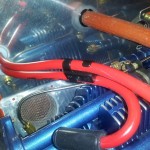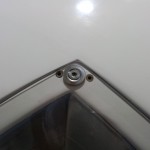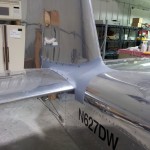Time to waste? Schedule a transponder inspection.
Called in late to work and headed off to the airport this morning to take care of the transponder/altimeter correlation check that’s required before using the transponder. I’d talked to the local shop about this last week, so I stopped in again to be sure they still had time to do it, then taxied the plane over to their hangar. Out came the guy with the test rig, and after finding the serial numbers for the encoder (a function performed by my EFIS) and transponder, he asked if the EFIS could be installed in a certified airplane. “No,” I said, “but this is an experimental aircraft.” He told me it didn’t matter, and that if it couldn’t be installed in a Cessna, he couldn’t certify it. I advised him that I didn’t believe this to be true, and he wandered off to ask someone else.
When he returned, he said OK, he could do it, “because the encoder is built into the transponder.” Not so, I knew, because I wired and plumbed the panel myself, and I have the installation manual right here on my Ipad…but I wasn’t going to argue the point, since he was now saying he could do it. Then, he had me pull the transponder out of the rack, whereupon he pointed to what appears to be an unused small screw hole on the back of the case, and told me that this was the static port, and I needed to have a static line plumbed to it; without that, I would be encoding the cabin static pressure, and they’d sent someone else away for the same reason before. If I were to put the transponder in a vacuum chamber, he told me, it would read whatever pressure was in the chamber. (FWIW, the install manual has arrows pointing to that screw hole saying “unused.”)
Well, at that point it was becoming evident that he didn’t know what he was talking about (there is no mention whatsoever in the manual of any static port, plumbing, or built-in encoders), so I took my transponder back, thanked him for his time and the education, and taxied back to the hangar. Pushed the plane in and went to work…frustrated that I’d driven all the way over and taken time from work for that; now I’ll need to ask for more time to deal with it it later.
I’ll call SteinAir once they open back up after Oshkosh on Wednesday, and see if they have time to make a field trip with their test rig to complete these checks. At this point, I don’t really have much of a choice but to have someone travel in to do it, at whatever that costs. I suppose I could fly with the transponder disabled and locate a friendly shop later at one of my Phase I airports, but having the transponder active in the (busy-ish) airspace around the cities is an aid to see-and-avoid, since traffic systems and TCAS can’t do anything with non-transponder aircraft.
Later in the day, talked to the DAR about the airworthiness paperwork, and confirmed that they really do need (or at least want) a full hour of ground run on the engine, despite the 2-hour test stand run, and all systems checking out OK in the runs that have been done so far. Had the FAA forms notarized, and dropped the packet in the mail to the MIDO on the way home from work. I’ll call them later in the week to be sure they got it, and then let the DAR know it’s ready. At this point, I think we can comfortably say that the inspection is “pending.”
